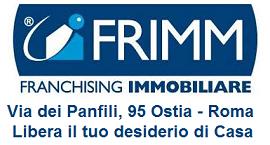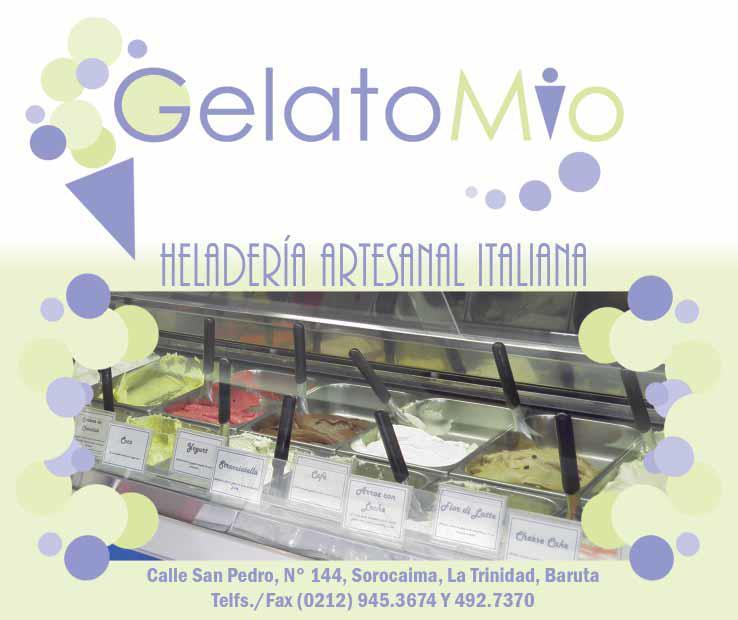WE work the land
It is difficult to imagine the territory of Reggio Emilia as an everchanging world and yet, passing through the many histories of
the land on display, we realise that this landscape had changed incessantly over the centuries, giving life to habits, scenarios and products very different from each other. Agriculture and its communities have forged this territory over the centuries, transforming it into an open-air laboratory. The loss of sense
of this territory can be curbed by bringing agriculture back onto centre stage, intended as a conscious and sustainable agricultural
practice able to build good practices around the concept of “Mother Earth”, thus ensuring its re-emergence as a new ecosystem for new generations.
There is a common feature to all the stories which have forged the lands of Reggio: an ability to create conditions which enable
communities to generate products, ideas, ways of being, all continuously perfected and renewed.
There is a striking collective intelligence which manifests itself n an array of contexts, from the lower rural areas to the city and all the way up the Apennine slopes, and which crystallises into community and cooperative associations which produce fragments of possible futures, educational models and widespread quality of life. Characteristics of the landscape, good agricultural practices and quality food are representative of the local area, as well as the
identity of a community which has continuously looked to the world as a horizon of collective change.
US would like to provide a transversal narrative, an overview of a land and its communities, which does not succumb to nostalgia despite recognising each element to be a fragment of a continuously renewed present and which identifies relevant elements in apparently distant events from our time.
US is an open reflection on the present day, a search for possible routes towards the construction of a sustainable future, sensitive to change but also aware of the heritage of the land’s stories and knowledge distilled throughout past centuries.
US is a representation of an open community which includes and attracts stories, intelligence, ideas of the world, embracing them all
as part of a collective process.
US is the idea of a living landscape in which agriculture, the environment, production, nutrition, education and communities merge and coexist in recognition and awareness, ready to undertake a necessary reconstruction.
US is above all an open laboratory which produces ideas and visions, a door to a land which has embraced this occasion to introduce itself to the world.
WE channel water
The stories of the water in Reggio Emilia are fragments of a complex world that have deeply changed the territory and produced technical expertise and a sense of teamwork that must be renewed in order to safeguard the future.
From the Roman aqueducts to today’s reclamation processes, passing through newly founded cities up to the numerous mills that for centuries have produced energy and good flour; and also, from the Apennine dams to the remote control and water management systems: the history and future of this common good depends on respecting the way in which water has been, and continues to be, monitored and used. Only if these practices are continued will water continue to be the centre of the rebirth of these lands.
WE work the land
It is difficult to imagine the territory of Reggio Emilia as an everchanging world and yet, passing through the many histories of the land on display, we realise that this landscape had changed incessantly over the centuries, giving life to habits, scenarios and products very different from each other. Agriculture and its communities have forged this territory over the centuries, transforming it into an open-air laboratory. The loss of sense of this territory can be curbed by bringing agriculture back onto centre stage, intended as a conscious and sustainable agricultural practice able to build good practices around the concept of “Mother Earth”, thus ensuring its re-emergence as a new ecosystem for new generations.
WE breed animals
“El capital,” the cow. “Al nimel,” the pig. The Reggiano dialect perfectly sums up the deep relationship existing between one civilization and its prized animals: the cow is the capital, which retains its wealth right until the end, while the pig is the animal par excellence, the creature of which nothing is thrown away. The farming world, from the plains to the Apennines, has always lived in strong symbiosis with the animals that supply the power
and raw materials to work, and that populate the most mysterious dreams and fantasies.e s
WE forge communities
In the 60s Reggio Emilia was known as the ‘province of cooperatives’. In all fields, the conception of a new economic enterprise starts with the idea of creating it together, sharing objectives, risks and benefits. In Reggio Emilia, cooperatives, consortiums, clubs and associations which embrace the local
economy in all its forms, including art, music, theatre, aid, religion, politics and cuisine, represent a continuous re-invention of society and its changes, in an attempt to achieve a fine balance between the individual and community.
WE produce the future
Imagine Reggio Emilia as a never-ending laboratory of ideas, research and manufactured products that has been operating for at least three thousand years. Look at each of its products as a distillation of knowledge, insights, defeats and confirmations that come from the land and from a widespread collective intelligence. This land has allowed creating an agricultural model able to generate food products that have been consolidated over centuries, such as Parmigiano Reggiano, Lambrusco, Balsamic Vinegar and pork derivatives. The food, mechanical and mechatronic industries are only some of the excellences of this territory and they represent its future.
WE portraits of a landscape
The portraits commissioned from the German photographer Kai- Uwe Schulte-Bunert are an important feature of the exhibition US since they have a double purpose: they welcome the visitor and at the same time they are powerful fragments of the contemporary community of Reggio Emilia. Every portrait depicts a typical scene of everyday life in the area, with characters taken from the fields of agriculture, the environment and food. We opted for closeup pictures because every face bears the signs of its story, of a landscape built up and transformed with love. And every story, together with a short narrative by journalist Marta Dore, reveal a tiny but important and passionate side of this land in recent history.
Photographs © Kai-Uwe Schulte-Bunert Texts © Marta Dore
MARTA SCALABRINI
32, chef. A year ago she opened her own restaurant, Marta in Cucina, where tradition assumes new and unexpected forms. «Why Marta in cucina? Because I want it to be clear from the start, to everybody, that it’s me, Marta, in the kitchen. I started working as a chef after following thousands of different paths. I studied communication, marketing and design. And it has all been useful to me, now I have channelled it into the dishes I invent with my partners Ivan and Giorgio, into the creation of menus and the planning of events at the restaurant.
There’s nothing traditional about my restaurant and yet everything is traditional. It features the flavours of tradition because I’m firmly rooted in Reggio Emilia, but these flavours have been contaminated with my travels. When I was 18 all I wanted to do was leave, I felt that this city had nothing to offer me. Then I felt the need to return. This is akin to messenger pigeon syndrome; you leave, search, put the pieces together but then in the end you return to your point of departure. Because you understand that the Holy Grail was here all along.
But the city’s put up a bit of fight, because in Reggio there’s lots to eat, people often satisfy their hunger by quaffing down a plate of tortelli. The concept behind our restaurant is different: here we serve dishes which have been developed from experimentation.
I know that this is the path for me, even though I can’t get my head around it sometimes. Now we’ve got a second property and we’re running a writing course with artists who contribute to our dishes. For us cooking is more than just rustling up a plate of tagliatelle, it’s about reflecting on everything that food conveys. Perhaps starting with tagliatelle».
WE love good food
The table is an extraordinary place around which communities gather. It is a space for all where differences, traditions, ideas, senses and tastes mingle to regenerate an ancient and essential ceremony that comes from the need to stay together. The history of Reggio Emilia, both public and private, has been written around banquets and feasts which alone could describe the character of its people, their love for good food and wine, their merry, happy-golucky outlook and a natural combination of ideals. In addition, there is another element that we find here, as in all of Italy: good food is part of an identity that continues to change over the centuries and which together defends its roots.
Tales of communities, ideas,
products and lands of Reggio
Emilia
Musei Civici di Reggio Emilia
May 16th 2015 – April 30th 2016
Luca Vecchi – Sindaco del Comune
di Reggio Emilia
Serena Foracchia
Assessora alla Città Internazionale
Massimo Magnani
Direttore Area Competitività e
Innovazione Sociale del Comune di
Reggio
Elisabetta Farioli
Direttore Musei Civici
Sponsor
Iren Rinnovabili Srl
Curated by
Luca Molinari
Scientific coordination
Musei Civici di Reggio Emilia
Team
Silvia Chicchi
Elisabetta Farioli
Roberto Macellari
Attilio Marchesini
Georgia Cantoni
Alessandro Gazzotti
Maria Montanari
Riccardo Campanini
Giada Pellegrini
Chiara Pellicciari
Filippo Franceschini
Francesca Monti
Panizzi library
Team
Giordano Gasparini
Laura Gasparini
Roberto Marcuccio
Chiara Panizzi
Maurizio Festanti
Reggio Emilia for Expo
Team
Massimo Festanti
Saverio Serri
Giovanni Sidoli
Anna Tondelli
Luca Molinari Studio
Team
Milena Sacchi
Claudia Saglimbeni
Ludovica Vacirca
Marta Dore
with
Alessandro Benetti
Exhibition design
Francesco Librizzi Studio
Team
Francesco Librizzi
Laura Bragalini
with
Anna Carcano
Graphic design
Tankboys
Team
Marco Campardo
Lorenzo Mason
with
Simone Spinazzé
Texts
Alessandro Benetti
Marta Dore
Attilio Marchesini
Luca Molinari
Milena Sacchi
Claudia Saglimbeni
Ludovica Vacirca
Portraits
Kai-Uwe Schulte-Bunert
Marta Dore (texts)

 (Copia).jpg)

